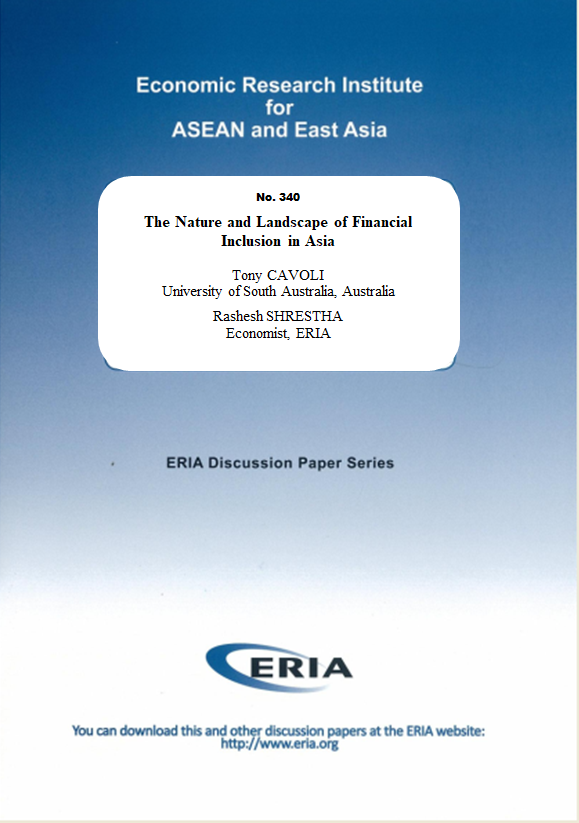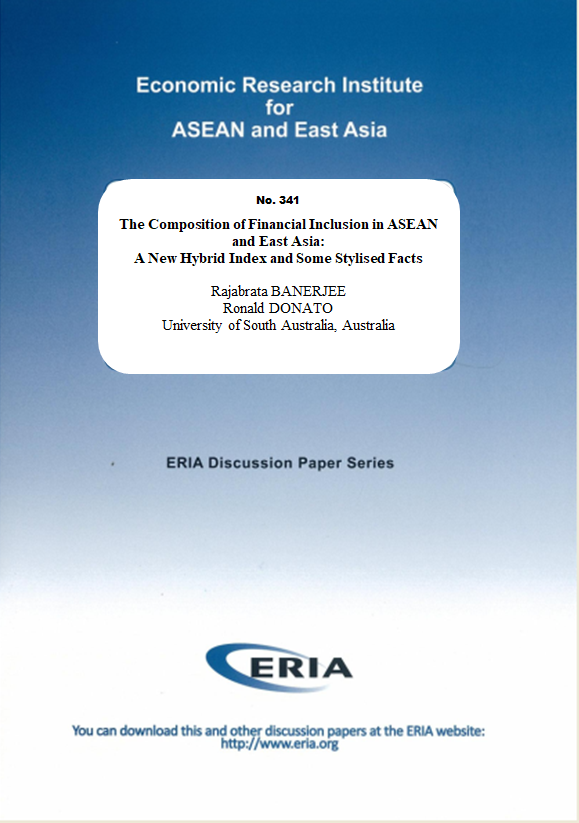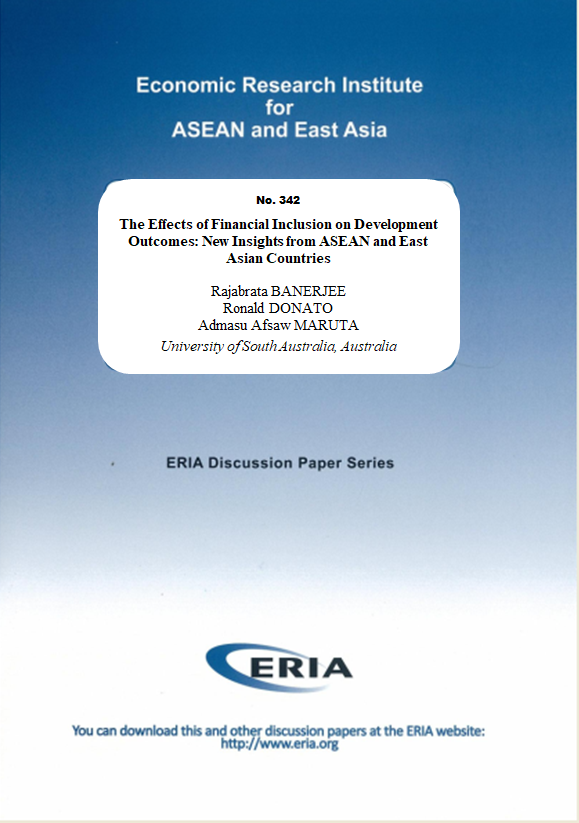The Nature and Landscape of Financial Inclusion in Asia

Date:
24 September 2020Category:
ASEAN, Finance and MacroeconomyType:
Discussion PapersTags:
ASEAN, Finance, Financial InclusionPrint Article:
This paper presents an examination of the key impacts of financial inclusion on economic prosperity and wellbeing, and on other development indicators such as those pertaining to health, education, gender, and social capital for Asia. It attempts to answer specific questions such as: What are the main individual dimensions of financial inclusion? Which of those are more effective at capturing the salient characteristics of financial inclusion? Does financial inclusion differ by gender, education, poverty, and other development outcomes (i.e. are there ‘gaps’?)? What is the role of policy? Might there be particular policies relating to financial inclusion that are more effective than others in addressing development outcomes? We find that the growth in financial inclusion has mainly occurred in the South Asian, CLMV, and ASEAN5 groups rather than in the more developed plus3 and ANZ nations, and that this occurs with both the traditional indicators (ATMs, branches), as well as in areas of fintech and digital finance. We also find systemic development gaps in financial inclusion – particularly between poor and non-poor segments of society, and rural vs urban populations.




